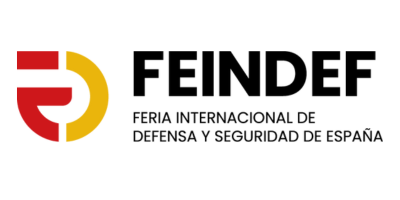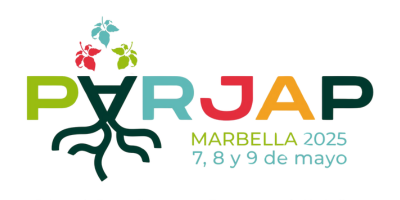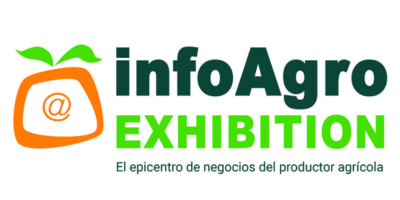What are nitrates and how do they work?
Nitrates are chemical compounds formed by nitrogen and oxygen (NO₃⁻) that play an essential role in plant nutrition. They are one of the main sources of nitrogen available in agricultural fertilizers, since plants easily absorb them through their roots to synthesize proteins, amino acids and chlorophyll, essential for their growth and development.
The nitrogen cycle in soil includes natural processes such as mineralization, nitrification and denitrification. When nitrogen fertilizers are applied to the soil, microorganisms transform them into nitrates, which can be absorbed by plants or move through the soil by leaching. The latter phenomenon occurs when excess irrigation or rainfall carries nitrates to deeper layers, where they can reach underground aquifers.
While nitrates are essential for productive agriculture, their accumulation in soils and waters can generate negative impacts, underscoring the importance of accurate measurement and efficient use.
The challenge of measuring nitrates in agriculture
Nitrates play a key role in modern agriculture, providing the nitrogen needed for crop growth. However, their uncontrolled use can lead to serious environmental problems, such as the contamination of aquifers and the eutrophication of rivers and lakes. To prevent these negative effects, nitrate measurement is key, but currently presents significant technical and regulatory challenges.
One of the main problems lies in the variability of the concentration of nitrates in soils, depending on factors such as:
- the type of crop
- crop rotation
- irrigation practices
- the application of fertilizers
In addition, weather conditions can influence nitrate leaching, making it difficult to control and monitor.
Added to this is the lack of accessible and efficient measurement methods, which puts the farmer in a difficult situation. With inaccurate or outdated tools, farmers are forced to operate with inaccurate data, which can lead to insufficient fertilization that affects the yield of their crops or to excessive application that increases the risk of environmental contamination. This scenario leaves producers in a vulnerable position, without adequate resources to manage nitrates efficiently and in compliance with current regulations.
The importance of proper management: The case of the Mar Menor
An example of how inadequate management of nitrates can affect the environment is the case of the Mar Menor, in the Region of Murcia. For years, the accumulation of nitrates from various sources has contributed to episodes of eutrophication in this coastal lagoon, favouring the massive growth of algae and affecting water quality. This phenomenon has generated environmental concern and has driven the development of stricter regulations to improve the management of fertilizers.
In response to these challenges, the Region of Murcia has implemented stricter regulations, such as Law 3/2020 on the Recovery and Protection of the Mar Menor, which establishes measures to reduce nitrate leaching and promote sustainable agricultural practices. These regulations are added to the Royal Decree 47/2022 at the national level, which requires monitoring of nitrates in groundwater and sets limits for their concentration. The implementation of these regulations highlights the need for accurate and constant measurement of nitrates for efficient and responsible use.
The consequences of inaccurate nitrate measurements
Inaccurate or insufficient measurement of nitrate levels in soil and groundwater can lead to several problems:
- Loss of fertilizers and reduced agricultural efficiency: When the concentration of nitrates in the soil is not precisely known, farmers may apply more fertilizer than necessary, which increases costs and reduces the sustainability of crops. In addition, overfertilization does not always translate into better yields and can affect the quality of agricultural products.
- Environmental impact: Excess leached nitrates reach aquifers and water bodies, affecting biodiversity and drinking water quality, which can lead to restrictions and penalties for farmers. Nitrate contamination in drinking water has been linked to public health problems such as methemoglobinemia or “blue baby syndrome.”
- Regulatory compliance : With increasingly strict regulations, both at national level and in the Region of Murcia, farmers must ensure accurate measurements to avoid sanctions and contribute to the sustainability of the sector.
If these measurement issues are not addressed, farms could face stricter regulations and even loss of access to certain water sources, putting the sustainability of the sector at risk.
Technology for accurate and efficient nitrate measurement
At OdinS, we understand the importance of accurate nitrate measurement to optimize fertilizer use and reduce environmental impact. We are developing innovative solutions that enable:
- Real-time monitoring of nitrate levels, providing accurate data to adjust fertilization at the right time.
- Provide portable and accessible systems that facilitate frequent measurement without the need for expensive or complex equipment.
- Its integration with digital platforms, so that farmers can easily view and analyze data.
- Make use of advanced sensors that employ voltammetry , nanotechnology or spectrometric analysis for faster and more reliable measurement.
- Provide predictive models based on artificial intelligence that help anticipate nitrate levels and optimize the application of fertilizers in a personalized way for each crop and plot.
Our mission is to help farmers comply with current regulations while maximizing the efficiency of their crops in a sustainable way. The implementation of these technologies not only improves the profitability of farms, but also contributes to the preservation of natural resources and the protection of public health.
Good practices for nitrate management
The use of tools to control and monitor nitrate levels is essential for efficient management of these compounds in agriculture. However, complementing them with good agronomic practices can further optimize their management and reduce their environmental impact. The key lies in maintaining an appropriate balance between fertilizer application, irrigation and soil conditions, thus avoiding unnecessary nutrient losses.
- Use of controlled release fertilizers , which reduce leaching and improve absorption by crops.
- Crop rotation with legumes , which help fix nitrogen in the soil and reduce the need for chemical fertilization.
- Efficient irrigation , applying water in the right amount and at the right time to minimize the drag of nitrates to deep layers of the soil.
- Vegetative cover in winter , which reduces soil erosion and nutrient loss.
- Use of biofertilizers and organic amendments , which improve soil structure and promote better nitrogen absorption.
Measuring nitrates is a key challenge in modern agriculture, with both economic and environmental implications. Having the right technology can make all the difference, allowing for more efficient and sustainable management of nitrogen fertilizers.
At OdinS, we work to develop the best solutions for agriculture with precision IoT technology. Discover our Smart Agro solutions here .
Do you need help?
Fill out the form and we will
we will be able to contact you.
Our customer service hours are Monday to Thursday from 08:00 to 17:00, Friday from 08:00 to 15:00. We will try to respond to you as soon as possible.


















